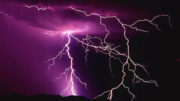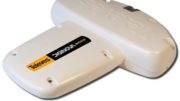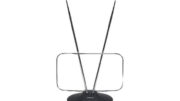(Edge Diffraction, MultiPath, Bounce and Trees)
Authors Note: I hereby acknowledge and give thanks to the website TVFool.com for the information that was used to illustrate this article.
Many of us, when we look at websites that tell us what stations we should be able to get and where to aim the antenna have noticed a section called Path.
LOS stands for Line Of Sight and means that there is nothing between the Transmitting tower and your location to interfere with the signal.
Number 5 in the list is marked 1Edge.
To understand 1Edge and 2Edge in the chart, You need to understand 2 things. 1. When a TV signal encounters a barrier, part of the signal is either blocked or reflected away from the path the signal was following.You also need to remember that TV signals bend.1Edge means that the TV Signal was Diffracted (or bent) around 1 large object that was in the way of the signal. 2Edge means there were 2 or more objects that were in the way.
How much a signal will bend depends on the frequency of the signal. AM Radio, which has a low frequency, will bend very easily around almost anything. This is why you can still get an AM Signal in an area where FM signals are not present, such as in a canyon. The AM Signal Diffracts (bends) around the canyon walls much easier than FM signals would. FM signals are a higher frequency, and hence Diffract less than AM Signals do.
VHF does not bend nearly as easily, and takes much longer for the waves to spread out (Regenerate) after being blocked by an object as shown below. Regeneration weakens the signal and so a 1Edge signal will be much weaker than the signal was before it hit the obstruction. When you get up into the UHF area, the amount of Diffraction is much less than with VHF.
This is a close-up map of part of the same area. The Mountain (Lower Center) is known as little mountain and it as high as any surrounding terrain. This is our 1Edge Barrier.
The Signals from the towers in Salt Lake and Ogden pass right through little mountain and so are blocked by little mountain.
We now have the overlay turned on for the highest frequency broadcast in the area (Channel 40). Note the area north of Little Mountain where there is no signal and then north of that the area tinted purple. The Purple is the signal that was bent around Little Mountain.
In general, a 1Edge signal is going to be very weak and may not be satisfactory for general viewing. To tune a 1Edge signal you will almost certainly need an inline Amplifier. 2Edge signals will need the most powerful antenna available and the strongest amplifier. Raising the height of the antenna helps sometimes, but there is a limit to that. You do not want an Antenna mounted on a 200-Foot tower, as there are special considerations such as lighting, climbing the tower to adjust the antenna and other things.
Sometimes the best place to aim an antenna is not directly at the Broadcast towers, but rather at a location where the signal is bounced off of a barrier. In the second Illustration of this article you will notice a Small Mountain spur to the lower right of the picture. Signals coming from Salt Lake bounce off the mountain at a location marked Box Elder Peak. Aiming in the direction of Box Elder Peak gives you a bounce signal that happens to be stronger than the 1Edge signal.





